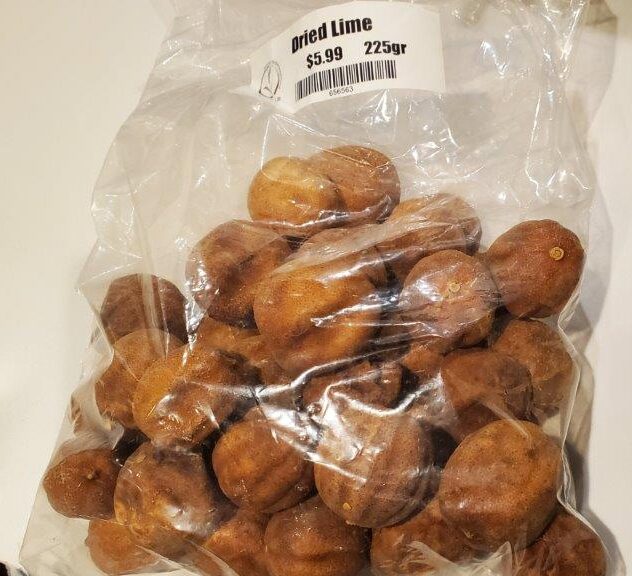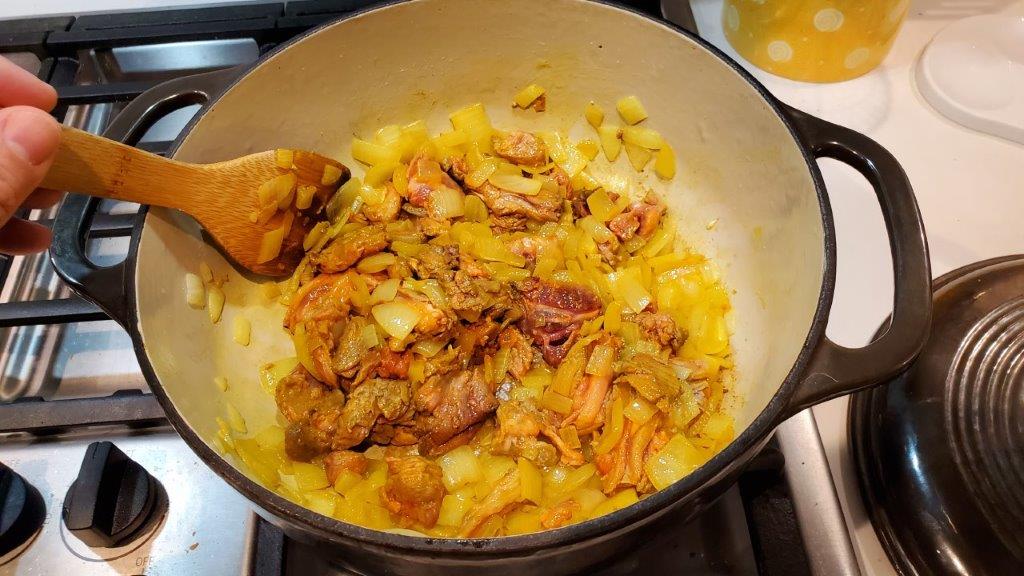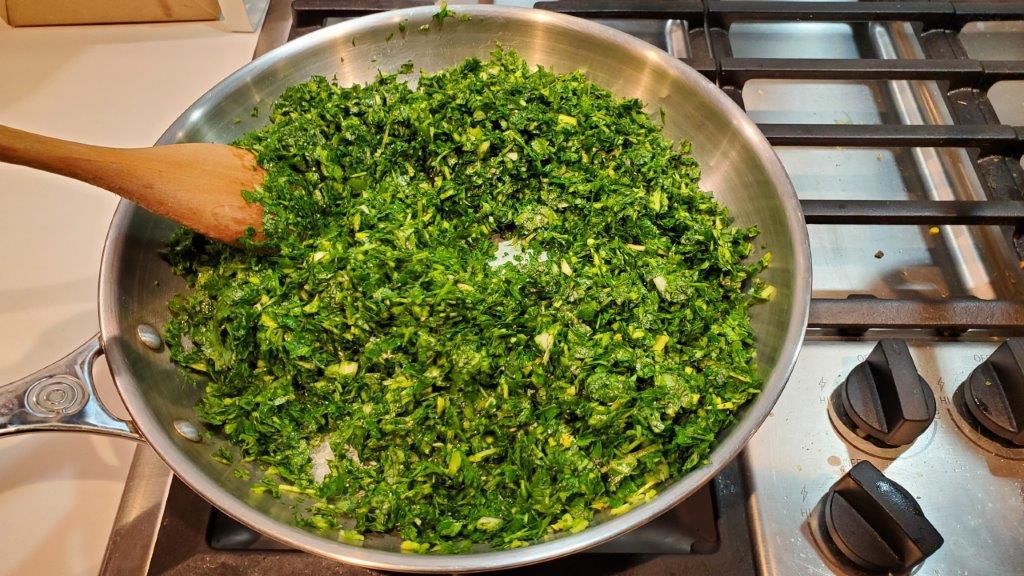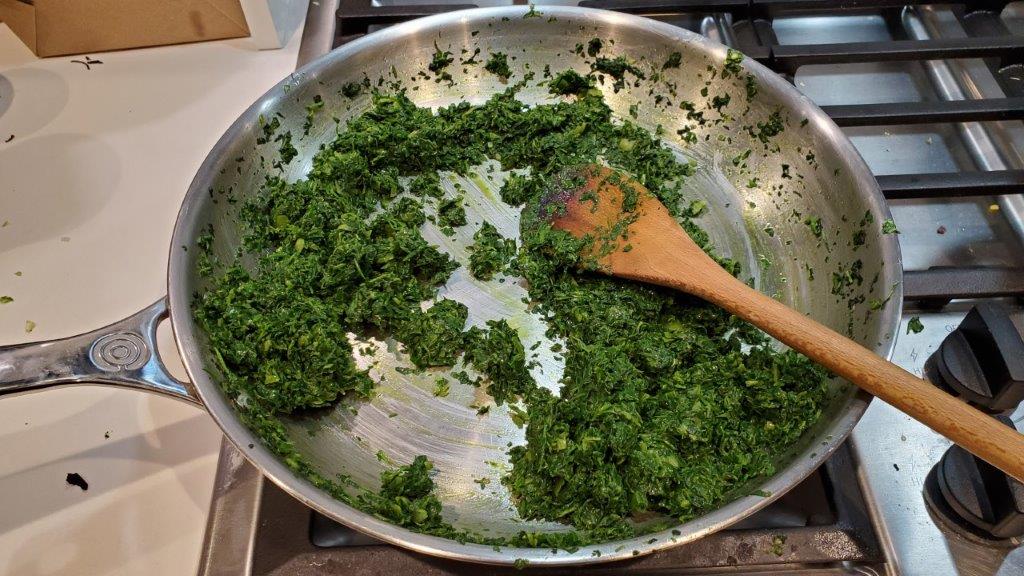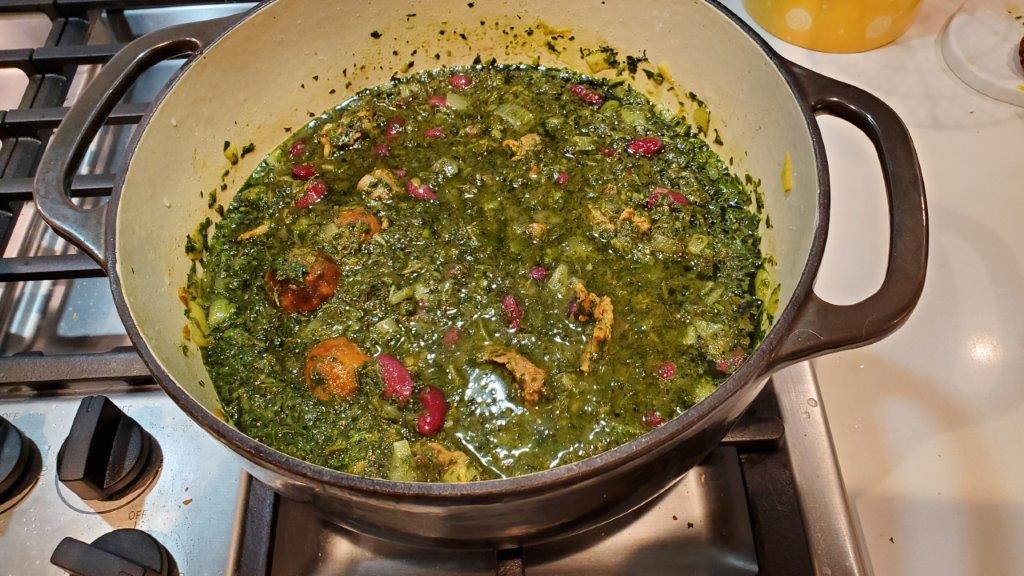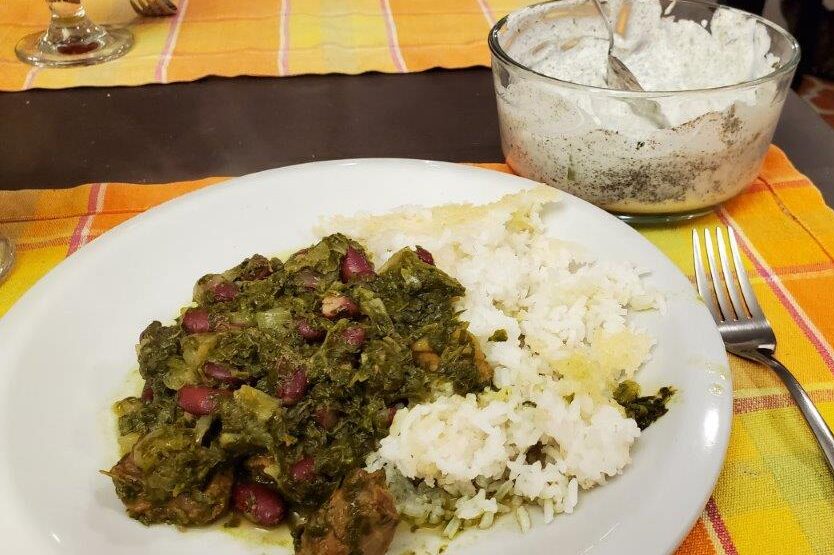It’s been a busy few months since our last international meal. A few roller derby tournaments, professional travel, and a nice round of bronchitis have delayed our return to the cooking project. But we’re finally back on track, and this week we’re making one of the leading contenders for “national dish of Iran” – gormeh sabzi.
Gormeh sabzi literally means “braised herbs”. This is a stew which usually contains meat, but meat is definitely not the focus of the dish. Rather, it’s centered around the amazing quantities of herbs in which the meat is cooked.
There’s a million versions of this, of course, and the best one is the one your grandmother makes. However, not having a Persian grandmother (we checked), we’re working out of a cookbook by Maryam Sinaiee, From the Land of Nightingales & Roses. This particular version calls for lamb, and specifically lamb neck.
“Lamb neck?”, you say… At least, that’s what the nice man at the first butcher shop I called said; “Lamb neck. Hmm. Nope.” But he was able to refer me to a halal butcher down the street that DID have lamb neck.
..in an unlabeled bag in the freezer, surrounded by lots of OTHER unlabeled bags, all containing meat parts of wildly varying levels of identifiability. The recipe specifically calls for lamb neck fillet, which would be much simpler to deal with than what I actually got which was an entire, bone-in, lamb neck. Then again – I shouldn’t complain. The staff at the butcher were cutting up a whole sheep carcass behind the counter while I was there. I only had to extract the meat from this:
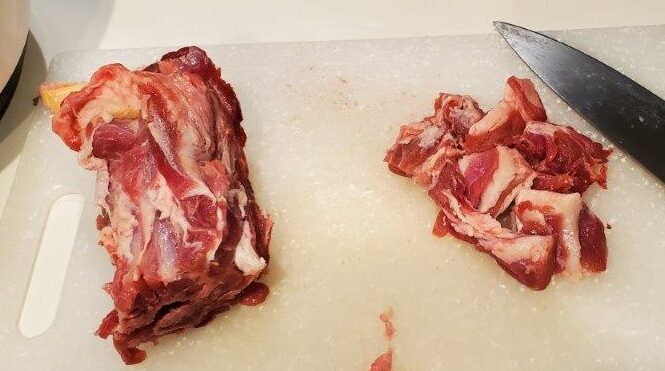
Definitely quite fiddly, but at least if we were responsible chefs we could have saved the bones and make a delicious lamb stock. Let’s pretend we did that.
The other ingredient I picked up at the grocer was a bag of dried Persian limes. Out of the bag, these puppies are hard as a rock, so we soaked them in hot water for a few hours before we got started.
So – limes soaked and lamb… delaminated? …it was time to start cooking, and this being a recipe that exists in the world, it clearly needed to start by frying some onions. (Seriously – I’m curious as what total fraction of the world’s dishes start by chopping and frying onions. I’m guessing north of 40 percent.)
Once the onions are golden, in goes some turmeric and the lamb. Once the meat is brown, you add some water, and everything gets to braise for an hour or so.
And that time is necessary, because it’s time to prepare our dish’s namesake herbs! Specifically, this version of the recipe calls for cilantro, parsley, spinach, leeks, and a little bit of fenugreek, which we had, but forgot to add.
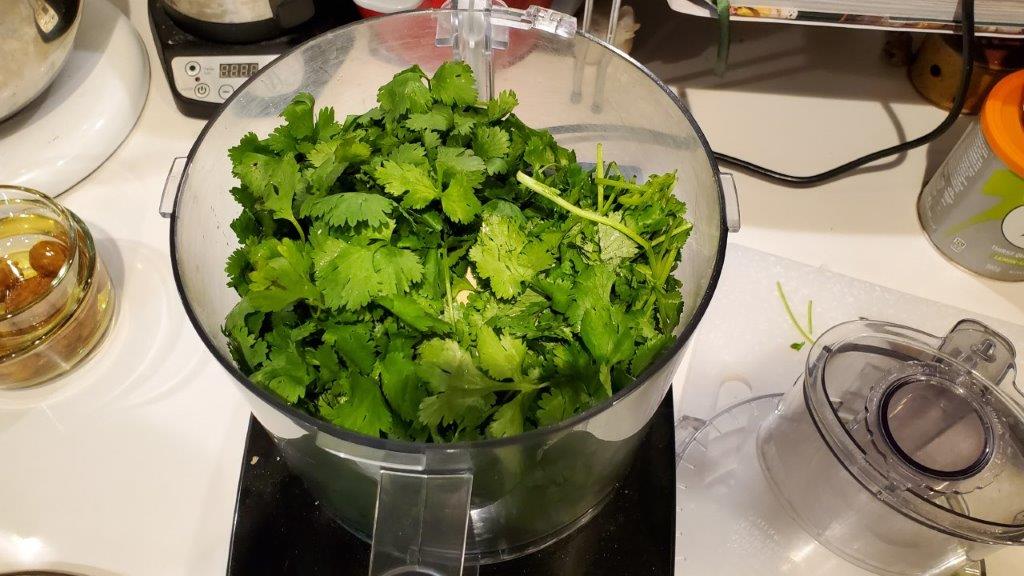
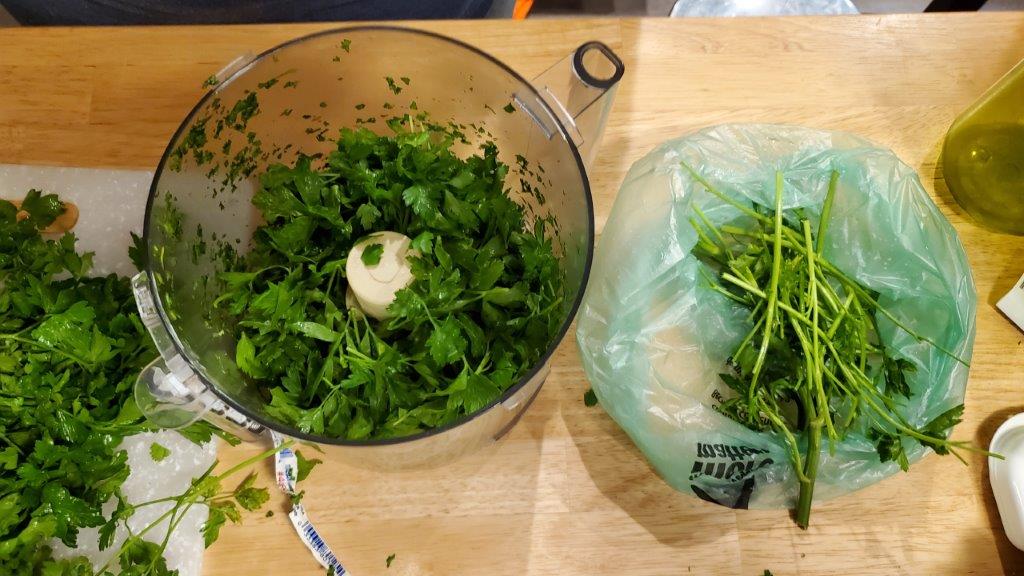
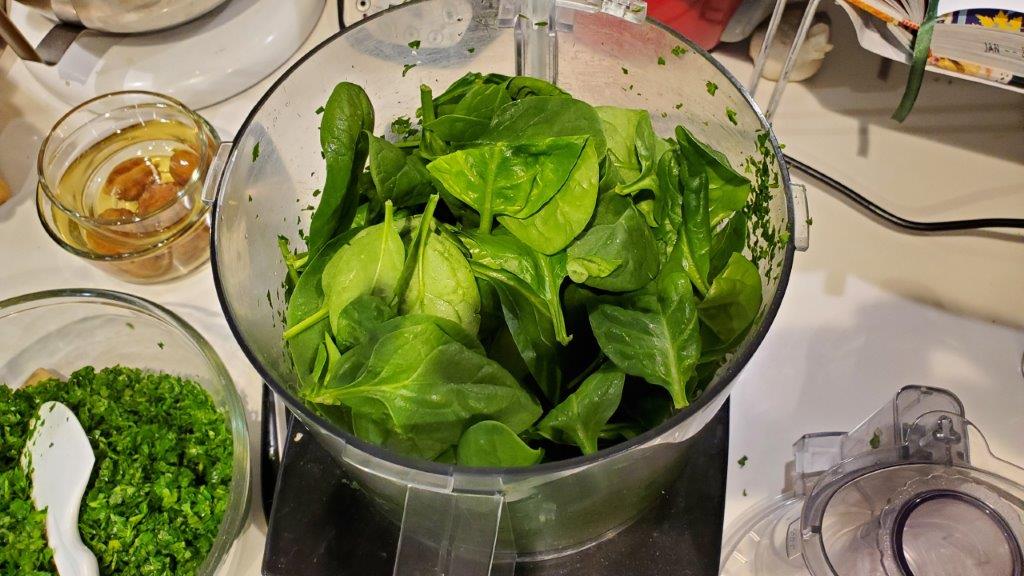
So much green stuff. Once everything is blitzed up fine, you toss it into a pan with some oil, and you cook it low and slow for a LONG time. This is apparently the key, unskippable step, which separates the quality grandmas from the bad ones. (I’m kidding – there are no bad grandmas.) These herbs need to get fried on low heat for something like half an hour to take them from this:
The aroma coming off of this pan was amazing. When the herbs are ready, they go into the pot with the lamb and it’s also finally time to fish those dried limes out of their soaking liquid.
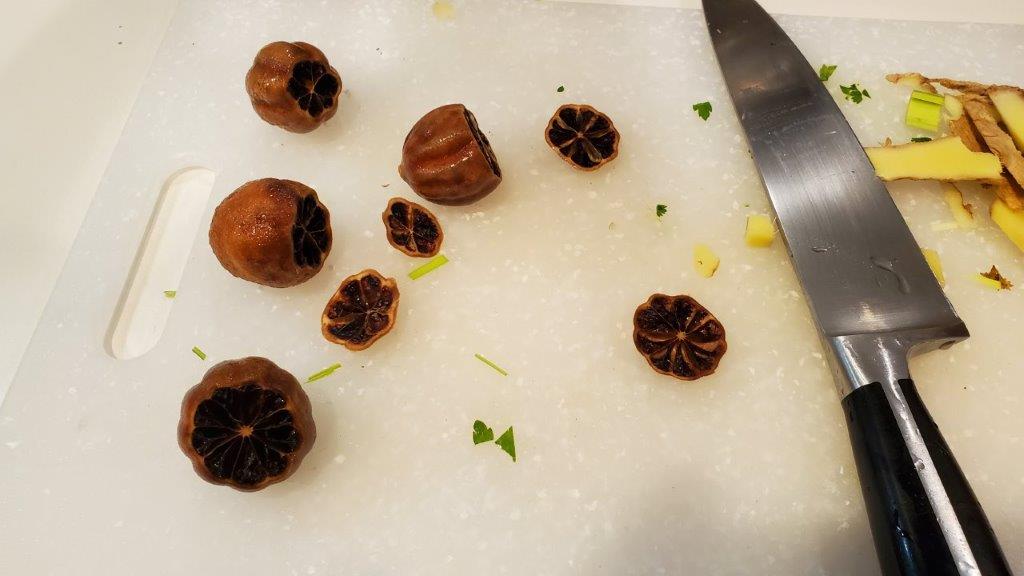
You cut the tops off to make sure the cooking liquid can circulate through the limes and get all the limey goodness out. Limes follow the herbs into the pot.
The observant among you will notice that there’s also a bunch of ginger peel on that cutting board, but I haven’t mentioned ginger at all in this recipe. That’s because there isn’t any. Instead, while we were cooking, we tossed the cut off tops of the limes in a tea strainer with ginger, mint, and a little sugar, and just steeped them to make tea. Not necessarily a particularly Iranian combination, but it sounded like it might be tasty, and it certainly was!
With half an hour left to go in the cook time, we added the last ingredients – a can of kidney beans, and a surprisingly small amount of salt.
The key accompaniment to this and many other Iranian meals is rice cooked to have a caramel brown, crispy crust, or tahdig, which is offered first to guests as the best part. We did not get this right. Dunno if we had the wrong kind of pan or just didn’t cook it long enough, but our crust was pale, not very crunchy, and also firmly welded to the pot.
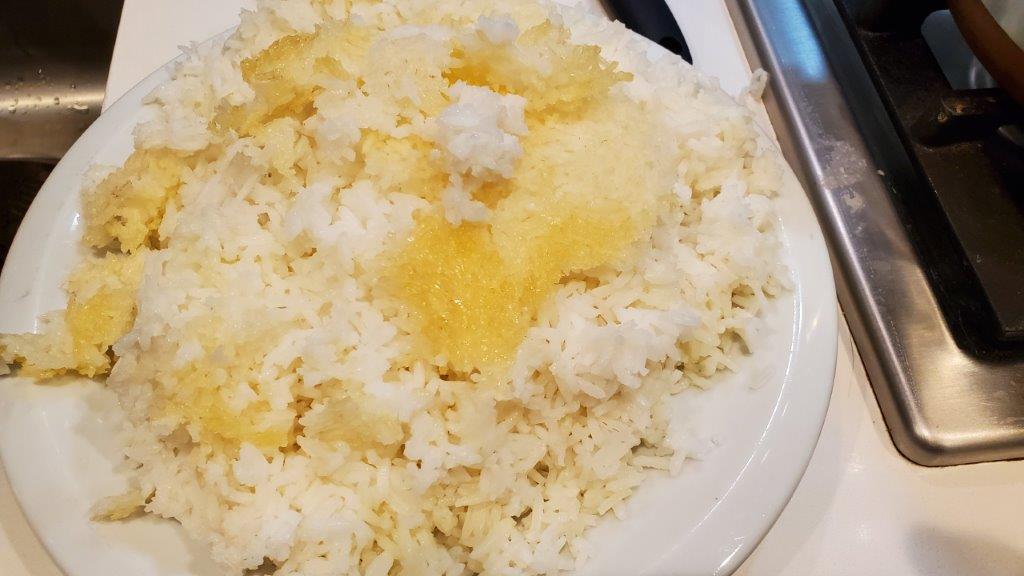
Grandma is weeping in her grave, I’m sure. It was still TASTY, but it wasn’t what tahdig is supposed to look like.
Finally, we tossed together a quick side dish of yogurt with cucumbers, dried mint, and just a hint of garlic. And here’s the final meal.
Like so many of the national dishes we’ve made for this project, this is clearly given pride of place for a reason. It is sensational. In addition to the sourness from the limes, you dress it with a little lemon juice at the very end to balance the deep, deep herby flavor from the braised greens. The lamb is super tender after cooking for several hours, and the tangy yogurt was the perfect accompaniment.
I showed the pictures to my two coworkers from that part of the world, and they said that as far as they could tell, we got the stew right. They also refrained from laughing TOO loudly at the rice, which was kind of them.
It’s great to be back in the swing of recipes, and we have the next country lined up for this weekend. And for those who have been anxiously waiting – we’re finally going to swing around and do the country we’ve been skipping for almost a year, Guyana!
Although we cooked out of a book this week, here’s a very similar recipe for ghormeh sabzi.

